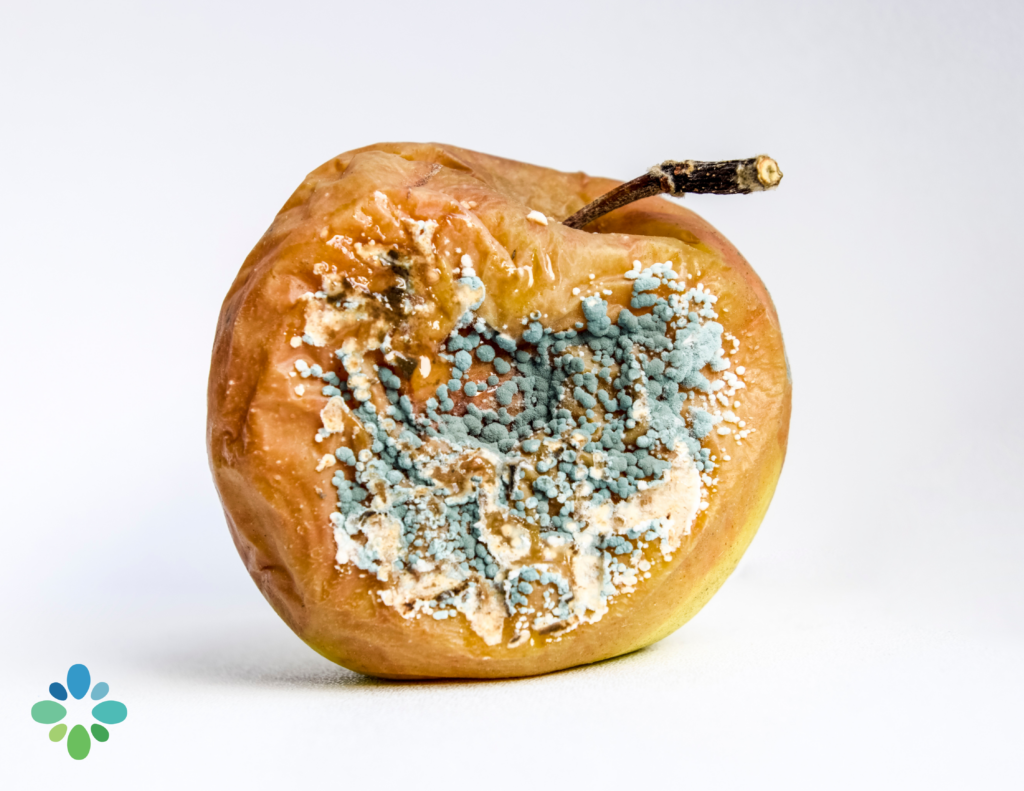Mold Toxicity: The Mysterious Disease Epidemic

Understanding Mold Toxicity: Symptoms, Consequences, and Root Cause Solutions
Mold toxicity, a condition resulting from exposure to harmful mold spores, is more common and hazardous than many people realize. From mild allergic reactions to severe chronic illnesses, mold exposure can wreak havoc on your health. Here at Back On Track 2 Wellness, we are dedicated to helping patients recognize and address mold toxicity to restore and maintain their well-being. This comprehensive guide will explore the different types of mold, their health impacts, and effective strategies for prevention and treatment.
What is Mold Toxicity?
Mold toxicity, also known as mold sickness, occurs when individuals are exposed to high levels of mold spores, leading to a range of health issues. Molds are fungi that can grow indoors and outdoors, thriving in damp, humid environments. While some molds are harmless, others produce mycotoxins, toxic substances that can pose serious health risks.
Symptoms of Mold Toxicity
Mold toxicity can manifest in various symptoms, often mimicking other health conditions, making it challenging to diagnose. Common symptoms include:
- Chronic fatigue
- Respiratory issues (coughing, wheezing, shortness of breath)
- Headaches and migraines
- Skin rashes and itching
- Eye irritation
- Sinus congestion
- Cognitive difficulties (brain fog, memory loss)
- Joint pain and muscle aches
- Mood swings and anxiety
ARTICLE CONTINUES BELOW
Schedule a Consultation TODAY!
We would love to sit down with you and chat about your experiences and current pain points.
The Three Types of Mold
Understanding the different types of mold is crucial for effective prevention and treatment. There are three primary types of mold that pose health risks:
1. Food-Based Mold
Food-based mold typically grows on perishable items such as bread, cheese, and fruits. Common examples include:
- Penicillium: Often found on fruits and vegetables, this mold can cause allergic reactions and respiratory issues.
- Aspergillus: Commonly found on starchy foods like bread and potatoes, it can produce mycotoxins that lead to severe health problems.
Consuming moldy food can lead to gastrointestinal issues, allergic reactions, and respiratory problems. According to the USDA, consuming moldy food can introduce harmful mycotoxins into the body, potentially leading to food poisoning and long-term health issues. It's essential to store food properly and discard items showing signs of mold growth.
2. Environmental Mold
Environmental mold is commonly found both indoors and outdoors. Indoors, it thrives in areas with high humidity, such as bathrooms, kitchens, and basements. Common examples include:
- Cladosporium: Often found on damp surfaces like bathroom tiles and windowsills, this mold can trigger asthma and allergic reactions.
- Alternaria: Commonly present in soil and on plants, it can cause hay fever-like symptoms and exacerbate asthma.
Outdoor molds can be found in soil, on plants, and decaying organic matter. Environmental mold exposure can cause respiratory issues, allergic reactions, and exacerbate asthma symptoms. The American Academy of Allergy, Asthma, and Immunology reports that approximately 21% of asthma cases are attributed to mold exposure.
3. Water Damage Mold Spores
Water damage mold spores result from leaks, floods, or excessive moisture in buildings. Common molds in water-damaged areas include:
- Stachybotrys (Black Mold): This toxic mold thrives on materials with high cellulose content, such as paper, wood, and drywall. It produces mycotoxins that can cause severe respiratory problems, chronic fatigue, and neurological damage.
- Aspergillus: This mold can also be found in water-damaged buildings and produces aflatoxins, which are among the most carcinogenic substances known.
According to the Federal Emergency Management Agency (FEMA), mold can begin to grow within 24-48 hours after water damage occurs. The Centers for Disease Control and Prevention (CDC) states that prolonged exposure to water damage mold spores can lead to significant health issues, including respiratory problems and weakened immune function.
Sick Building Syndrome
Sick Building Syndrome (SBS) is a condition where occupants of a building experience health issues directly related to time spent in the building. Mold exposure is a significant contributor to SBS, leading to symptoms such as headaches, respiratory problems, skin irritation, and cognitive difficulties. Buildings with poor ventilation, water damage, and high humidity levels are particularly prone to SBS.
Immune Resilience and Mold Exposure
One intriguing aspect of mold toxicity is how it affects individuals differently. In a household with mold exposure, it is possible for one person to experience severe symptoms while another remains unaffected. This discrepancy often boils down to differences in immune resilience and underlying health issues.
Factors Influencing Immune Resilience
- Underlying Health Conditions: Individuals with pre-existing health conditions, such as autoimmune diseases, asthma, or chronic illnesses, are more susceptible to mold toxicity. Their compromised immune systems struggle to combat the mycotoxins effectively.
- Genetic Predispositions: Some people have genetic variations that make them more prone to mold-related illnesses. These genetic factors can influence how their bodies detoxify and respond to mold exposure.
- Nutritional Status: A diet lacking essential nutrients can weaken the immune system. Individuals with poor nutritional status may be less equipped to fend off the adverse effects of mold exposure.
- Stress Levels: Chronic stress can suppress the immune system, making it harder for the body to fight off infections and toxins. High-stress levels can exacerbate the symptoms of mold toxicity.
- Environmental Factors: Factors like air quality, humidity levels, and the presence of other environmental toxins can influence how mold affects different individuals within the same space.
The Impact of Mold Toxicity on Health
Mold toxicity doesn't just cause immediate symptoms; it can lead to long-term health issues and exacerbate existing conditions. Prolonged mold exposure can weaken the immune system, making individuals more susceptible to infections and chronic illnesses. Conditions that can be triggered or worsened by mold toxicity include:
- Asthma and other respiratory diseases
- Chronic inflammatory response syndrome (CIRS)
- Autoimmune disorders
- Chronic fatigue syndrome
- Neurological issues, including depression and anxiety
A Success Story: Overcoming Mold Toxicity
At Back on Track 2 Wellness, we have helped many patients overcome the challenges of mold toxicity. One such patient, Sarah, experienced chronic fatigue, respiratory issues, heat intolerance, and cognitive difficulties for more than 15 years. Despite seeing multiple specialists, her symptoms persisted, and she continually felt sick. After talking to a friend regarding her ongoing health issues, Sarah was referred to our office for a Functional Medicine opinion. We performed a comprehensive evaluation including advanced lab testing to determine the extent of her chronic health concerns, Once completed, it was determined she was suffering from mycotoxin/mold illness. Furthermore, we were able to trace her mold exposure to both her current home and interesting, her childhood home.
We jumped in and immediately implemented a holistic healing protocol, including mold remediation in Sarah's home, lifestyle changes, and supportive therapies. Within months, Sarah's health improved dramatically. She regained her energy, her respiratory symptoms diminished, and she experienced a significant improvement in her cognitive function.
Statistics on Mold Toxicity
- According to the World Health Organization (WHO), indoor air pollution, including mold, contributes to 4.3 million deaths annually.
- The Environmental Protection Agency (EPA) estimates that about 21% of asthma cases in the United States are linked to dampness and mold exposure in homes.
- A study published in the "Environmental Health Perspectives" journal found that mold exposure in homes is associated with a 30% increase in the risk of respiratory infections.
Addressing Mold Toxicity: The Role of Air Quality
Maintaining clean air is crucial in managing mold toxicity. Dr. Todd Bunning emphasizes the importance of using high-quality air purifiers to reduce mold spores in indoor environments. One such effective air purifier is the "Air Doctor" recommended by Dr. Jockers.
The Air Doctor air purifier is designed to remove mold spores, mycotoxins, and other airborne contaminants. It features an Ultra HEPA filter that captures particles as small as 0.003 microns, ensuring that even the tiniest mold spores are eliminated from the air. Using the Air Doctor can significantly reduce the risk of mold toxicity and improve overall indoor air quality.
Preventing Mold Toxicity
Preventing mold toxicity involves addressing the root causes of mold growth and maintaining a healthy living environment. Here are some tips to prevent mold exposure:
- Control Humidity: Keep indoor humidity levels below 60% using dehumidifiers and air conditioners.
- Fix Leaks Promptly: Repair any leaks in roofs, walls, or plumbing to prevent water damage.
- Ensure Proper Ventilation: Use exhaust fans in bathrooms and kitchens to reduce moisture levels.
- Clean and Dry: Clean and dry any areas affected by water damage within 24-48 hours to prevent mold growth.
- Use Air Purifiers: Invest in high-quality air purifiers, like the Air Doctor, to maintain clean air and reduce mold spores.
Conclusion
Mold toxicity is a serious health concern that can lead to a wide range of symptoms and long-term health issues. Uncovering mold toxicity leading to chronic health issues takes thorough investigation and a deep understanding of the Functional Medicine web of chronic disease. Conventional medicine overlooks mold toxicity which is one reason why Mold toxicity remains a silent threat to ongoing and unexplained poor health issues.
Recognizing the signs of mold sickness, understanding the different types of molds, and taking steps to improve air quality are crucial in preventing and managing mold exposure. At Back on Track 2 Wellness, we are dedicated to helping patients overcome mold toxicity and achieve optimal health. If you suspect mold exposure is affecting your health, don't hesitate to consult with us for a comprehensive evaluation and personalized lifestyle plan.
By taking proactive measures and addressing mold issues promptly, you can protect yourself and your loved ones from the harmful effects of mold toxicity. Remember, maintaining a clean and healthy living environment is essential for overall well-being.
For more information on mold toxicity and to schedule a consultation, visit Back On Track 2 Wellness or call us today. Let's work together to create a healthier, mold-free environment for you and your family.
Schedule Your Telehealth Consultation
We would love to sit down with you and chat about your experiences and current health complaints.
The information on this website has not been evaluated by the Food & Drug Administration or any other medical body. We do not aim to diagnose, treat, cure or prevent any illness or disease. Information is shared for educational purposes only. You must consult your doctor before acting on any content on this website, especially if you are pregnant, nursing, taking medication, or have a medical condition.

By Dr. Todd W. Bunning
Dr. Todd W. Bunning’s Chiropractic and Functional Medicine services reach far beyond the local Roseville area, with webcam consultations available for patients in any location. With over 21+ years of Private Practice experience, Dr. Todd continues to focus on the individual: science-based methods to address whole-body health factors.
Dr. Todd’s education didn’t stop when he graduated from Life West Chiropractic College in 2003. Today, he’s continuing to receive training and is chipping away on numerous post-graduate degree programs. This unique blend of clinical health investigation and Lifestyle Medicine application helps people of all ages find the underlying factors that result in chronic disease.